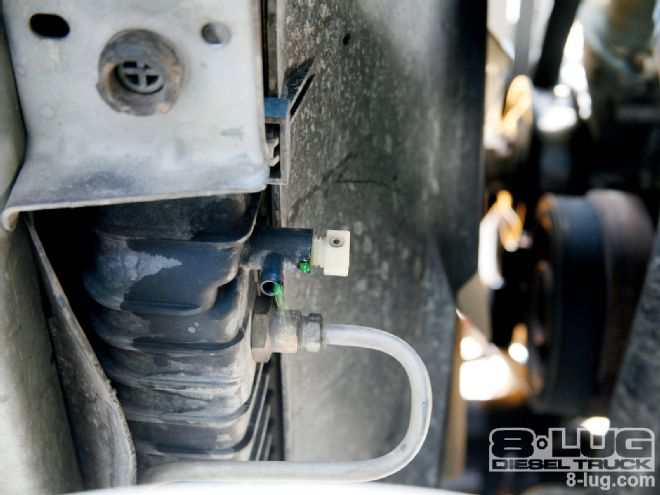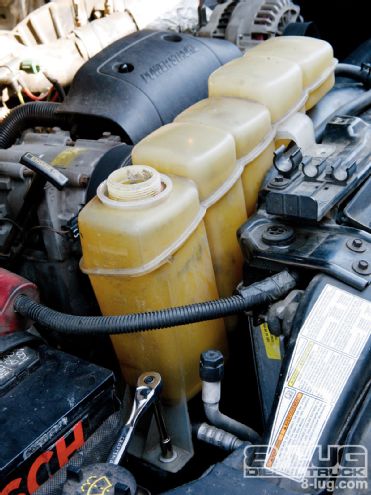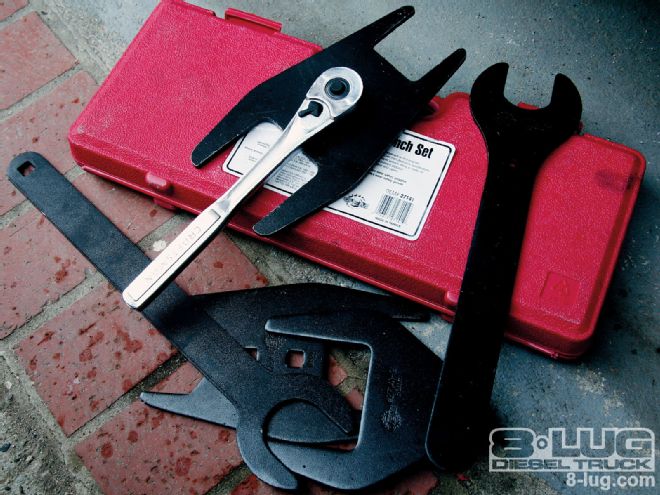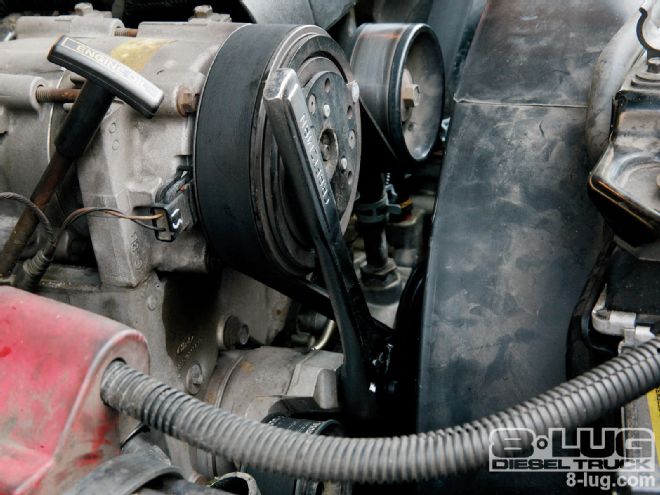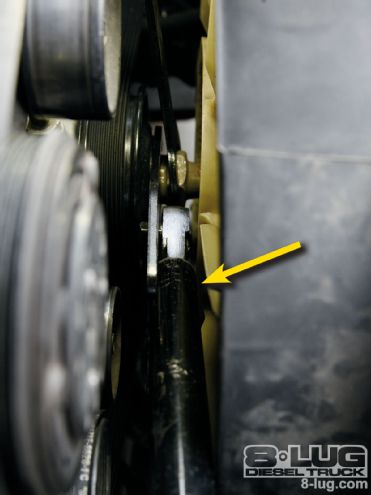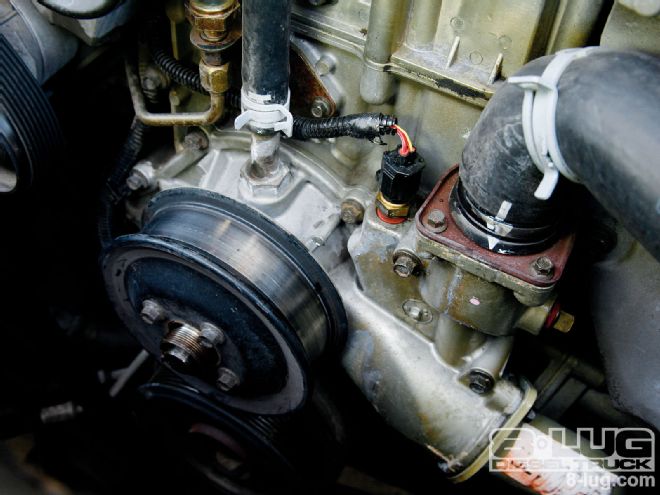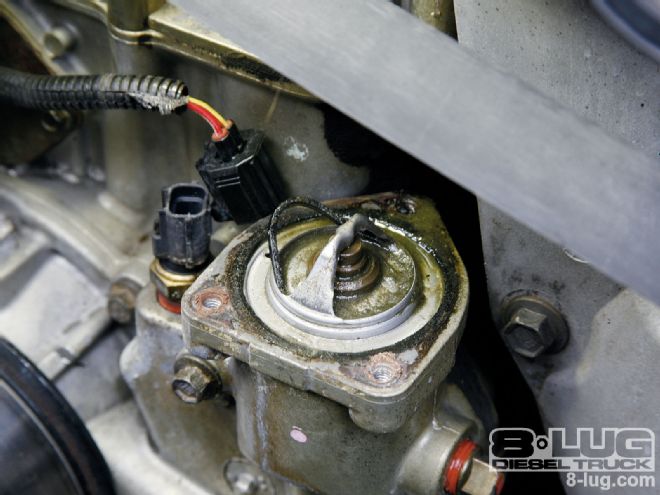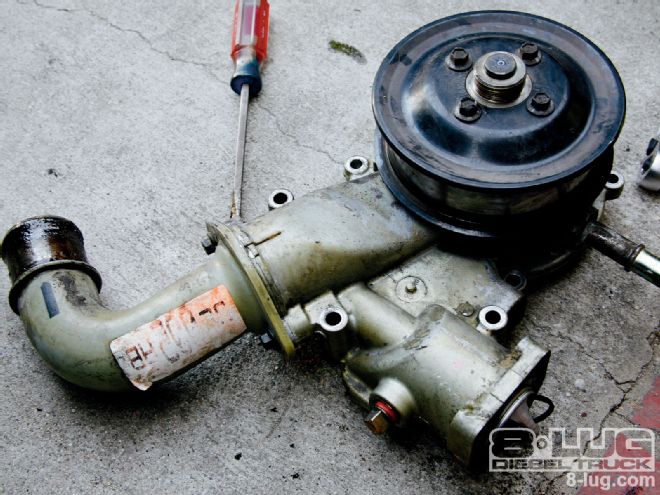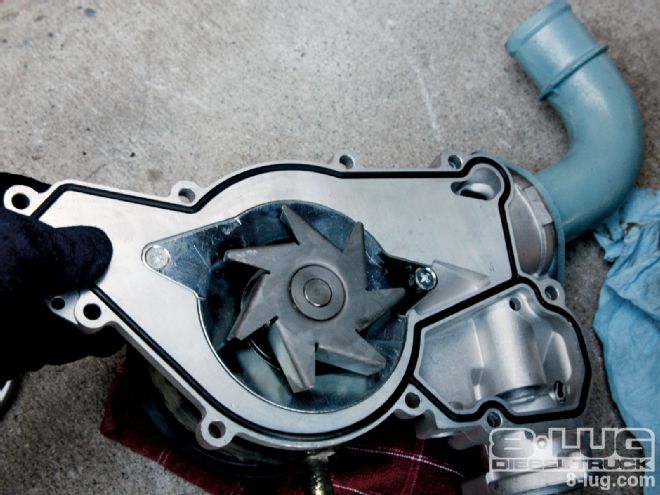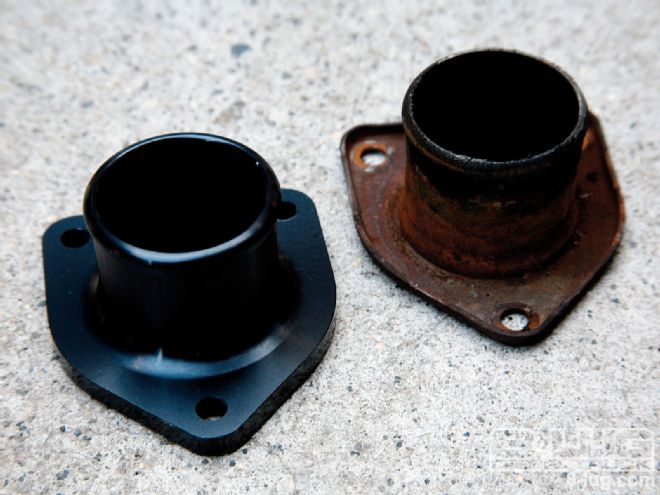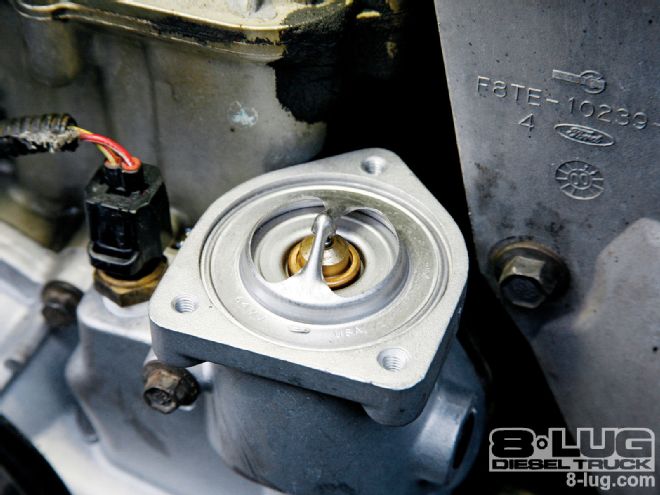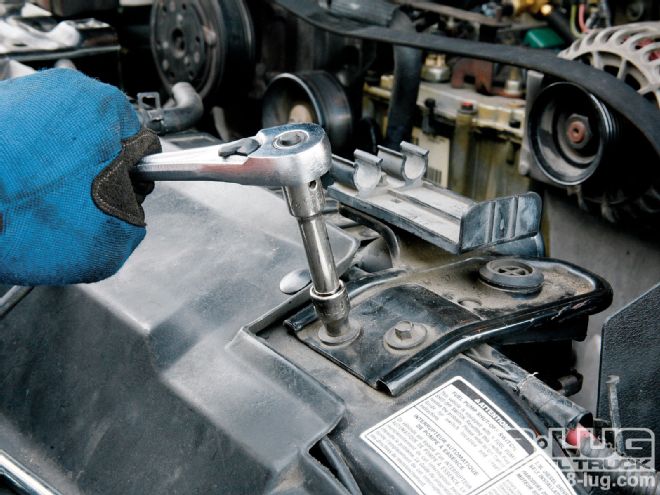Truth be told, we actually didn't plan this phase of our F-350 project-it came as a surprise. Just after coming down from a long, steep climb on I-5 far north of Los Angeles while towing another project on a trailer, we stopped off to fuel up and grab some coffee. While watching the numbers roll on the pump, we smelled the unmistakable, sickeningly sweet aroma of hot antifreeze. We smugly assumed that someone else was about to have a bad day, until a guy tapped us on the shoulder and informed us that our truck had a steady trickle of coolant forming a puddle under the front of the engine. Not good news, since we were a long way from home.

| Water pump protection and a better-running 7.3L, all from an afternoon's worth of easy bolt-ons from Dieselsite.
Upon closer inspection, we discovered that the radiator was fine, but the steady, fast drip was coming from out of sight, just above the harmonic balancer. After a little rubber-arm stretching, we were able to confirm that the water pump weep hole was the source. Our trip was definitely canceled for now, but the truck was still running cool, so we rolled the dice and limped it 400 miles back to L.A. Besides, AAA sure wasn't going to pick us up with a loaded car trailer.
Since we were going to be tearing the cooling system down anyway, we decided to call up 7.3L authority Bob Riley at Dieselsite to get his recommendations on how to increase the longevity of our pricey, brand-new water pump. Bob explained that we were likely the victims of an all-too-common problem-casting sand leaching onto the cooling system. The 7.3L Power Stroke blocks are sand cast, and despite Navistar's efforts, the sand isn't completely removed from the cooling passages. Additionally, supplemental coolant additives (SCAs) used in protecting against cavitation and other cooling system woes can solidify and create abrasive flakes. Eventually, the particles, worked loose by constant coolant flow, vibration, and heat, make their way to the pump where they prematurely wear the seals. To remedy the situation, Bob has put together a simple kit consisting of a filtration system that runs the coolant through a spin-on-style filter to pull out the grit. Check out Dieselsite.com to see photos of how much junk can be removed in just the first few weeks of filtering.
The other component of the kit is an item that had honestly never crossed our minds as a potentially upgradeable performance part-the thermostat. When Navistar originally designed the 7.3L Power Stroke, it was equipped with 203-degree thermostats. When Ford redesigned the water pump in '96, it opted for a more standard, 195-degree thermostat. The issue Bob saw in testing is that when the 195-degree thermostat first opens at around 175 degrees, the Super Duty's extremely efficient cooling system tended to keep the temperature well below 195 degrees, even under load. While that's fine for gassers, 7.3L diesel engines tend to run most efficiently closer to 200 degrees. With no other alternative available (see the sidebar), Bob worked to bring a 7.3L-specific thermostat to enthusiasts with a 203-degree rating. This thermostat is designed to open around 190 degrees, bringing the engine closer to its preferred running level.
So why should you care? Well, that's the interesting part-when a compression ignition engine runs closer to its optimal temperature range, overall efficiency is improved. In testing, Bob regularly saw small bumps in fuel mileage, less smoke under hard throttle, and even improved response. That's a tall claim from one tiny part, but all of Dieselsite's unique and well-engineered products go through rigorous testing prior to public release, so we decided it was worth a try in our truck. You might be surprised at the results-we know we were.
We figured there wouldn't be much we could review on this system until we had a filter plugged with grit to dissect and examine, since although the theory behind the thermostat was sound, we honestly didn't expect there to be all that much of a drivability difference. We were pleasantly surprised when we discovered we were wrong.
You know that difference in how your truck feels when it's running really well versus running spot-on? That's the analogy we'd draw. It was a slight enough difference that it would be unlikely to show up on a chassis dyno, but our butt dyno noticed it in city and freeway driving since we were intimately familiar with how the truck ran in all situations. It felt just a bit more responsive overall. Also, although we'd never had a visible smoke problem with our 7.3L, the typical acrid smell of the exhaust we'd grown familiar with was now noticeably cleaner smelling. On top of that, while running one of our usual routes, we noted a mileage increase of at least 1.5 mpg. Not a huge amount, but it does add up quickly. Plus, considering the quick, cheap, and easy nature of the upgrade, we'd say it's an outstanding return on the investment.
Caution:
Not All Thermostats Are Created Equal
Specifically, we're referring to the International 203-degree thermostat that is still available in most chain parts stores. While it is the proper temp and will technically drop right into the 7.3L's water pump port, it's physically not the right design for the '96-and-newer Ford pump. The International thermostat has a shorter shaft that will not shut off the internal pump bypass and cannot accurately control coolant flow-potentially causing massive overheating without indication on the stock temp gauge. In short, '96 to '03 trucks currently only have two safe options: the stock 195-degree or Dieselsite's 203-degree thermostat.
